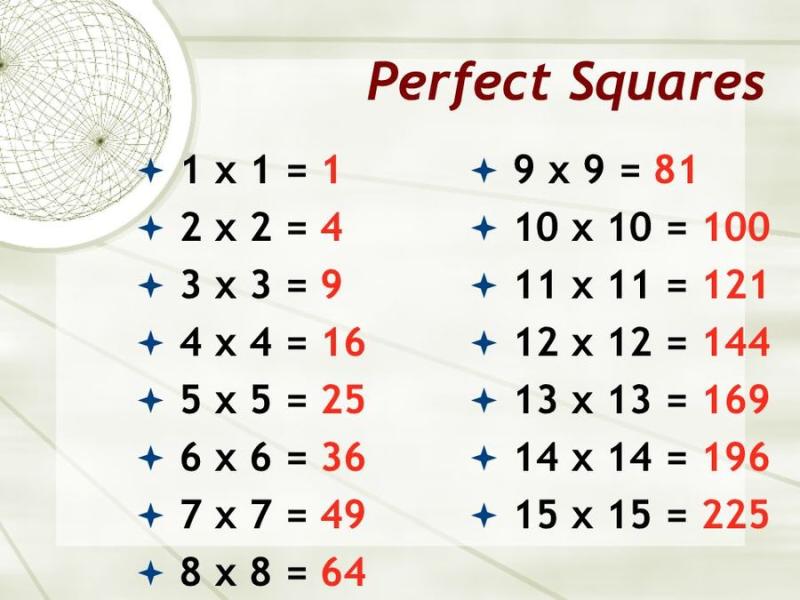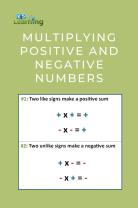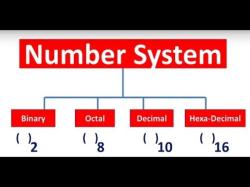How do you find the perfect square?
A perfect square is a number that can be expressed as the square of an integer (whole number). To find perfect squares, you can use several methods, including basic arithmetic, prime factorization, and mathematical rules. Here are some common methods for finding perfect squares:
Squaring Numbers: The most straightforward way to find a perfect square is by squaring an integer. For example:
- 4 is a perfect square because 4 = 2² (2 squared).
- 9 is a perfect square because 9 = 3² (3 squared).
- 25 is a perfect square because 25 = 5² (5 squared).
Prime Factorization: You can find perfect squares by prime factorization. To do this, you break down the number into its prime factors and check if each prime factor has an even exponent (power). If all exponents are even, the number is a perfect square. For example:
- To determine if 36 is a perfect square, prime factorize it: 36 = 2² * 3². All exponents (2 and 2) are even, so 36 is a perfect square.
- To determine if 30 is a perfect square, prime factorize it: 30 = 2 * 3 * 5. Not all exponents are even, so 30 is not a perfect square.
Mathematical Rules: Some mathematical rules can help you identify perfect squares:
- If a number ends in 00, 25, 16, or 64 (or any other perfect square ending), it is likely a perfect square. For example, 625, 1600, 1296, and 4761 are perfect squares.
- If the sum of the digits of a number is divisible by 3, the number might be a perfect square. For example, 121 (1 + 2 + 1 = 4) is a perfect square because 4 is divisible by 3.
- If a number is the square of an integer, it's a perfect square. For example, 144 is a perfect square because it is the square of 12 (12² = 144).
Completing the Square: Completing the square is a mathematical technique used to find the square root of a quadratic equation, which can help you determine perfect squares. It's more advanced and typically used in algebra and calculus.
Examples of Perfect Squares:
- 1, 4, 9, 16, 25, 36, 49, 64, 81, 100, 121, 144, 169, 196, 225, and so on.
These methods should help you identify perfect squares, which are useful in various mathematical and practical applications.
Methods for Finding Perfect Squares
Perfect squares are positive integers that can be obtained by squaring an integer. In other words, a perfect square is the product of an integer multiplied by itself. For instance, 4 is a perfect square because it is the result of 2 multiplied by itself (2 x 2 = 4).
There are several methods for identifying perfect squares, each with its own advantages and disadvantages. Here are two common methods:
Method 1: Square Root Method
The most straightforward method for determining if a number is a perfect square is to calculate its square root. A number is a perfect square if its square root is an integer. For example, the square root of 16 is 4, which is an integer, so 16 is a perfect square.
Method 2: Prime Factorization Method
Another method for identifying perfect squares involves prime factorization. Prime factorization is the process of expressing a number as a product of its prime factors, which are the smallest prime numbers that can divide the number without leaving a remainder. If a number can be expressed as the product of two equal sets of prime factors, it is a perfect square. For instance, the prime factorization of 16 is 2 x 2 x 2 x 2, which can be rearranged into (2 x 2) x (2 x 2), indicating that 16 is a perfect square.
The Square Root Method: Finding Perfect Squares
The square root method is a direct and efficient approach for identifying perfect squares, especially for smaller numbers. To determine if a number is a perfect square using the square root method, follow these steps:
Calculate the square root of the given number.
If the square root is an integer, the number is a perfect square.
If the square root is a decimal or fraction, the number is not a perfect square.
Using Prime Factorization to Identify Perfect Squares
The prime factorization method is a more systematic approach that can be useful for larger numbers. To identify perfect squares using prime factorization, follow these steps:
Find the prime factorization of the given number.
Analyze the prime factors. If the prime factors can be grouped into two equal sets, the number is a perfect square.
If the prime factors cannot be grouped into two equal sets, the number is not a perfect square.
Both methods, the square root method and the prime factorization method, can effectively determine if a number is a perfect square. The choice of method may depend on the individual's preference and familiarity with each approach.













